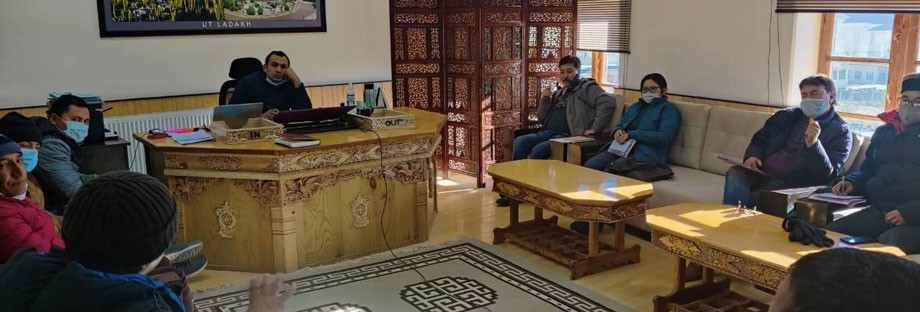Administrative Secretary, Ladakh, plans to integrate animal farm sector with tourism industry

Administrative Secretary, UT Ladakh, Ravinder Kumar convened a meeting regarding a proposal to link the tourism industry with the animal farm sector in Ladakh on December 23.
Director Tourism, Director Animal/Sheep Husbandry and Fisheries Department, President, and member of All Ladakh Tour Operator Association of Leh, District officers of Department of Animal and Sheep Husbandry, Tourism Department, Under Secretary Tourism Department and OSD to Administrative Secretary attended the meeting.
Keeping in view of the potential, Ravinder Kumar asked the Department of Tourism and Animal/Sheep Husbandry and Fisheries, UT Ladakh, to work out the modalities of integrating the animal farm sector with the Tourism industry.
He directed the Director animal/sheep husbandry and fisheries to arrange a preliminary survey cum tour of the officials of the Tourism Department and All Ladakh Tour Operator Association. Trout Fish Farm Damsna, Kargil, Zanskari Equine Breeding Farm, Chuchot, Leh and Pashmina Goat Farm, Upshi, Leh was proposed in the first phase as a model and replicating the same in the later stages.
The OSD to Administrative Secretary, Dr. Stanzin Thakchos briefed about the concept and proposal of linking the tourism sector with the departmental farms in UT Ladakh.
Director Animal/Sheep Husbandry and Fisheries Department said that Department of Animal/Sheep Husbandry and Fisheries is a farmer welfare department and currently has no such provisions in the department. For which the secretary has instructed the tourism department to look into it and proposals shall be submitted soon.
The secretary asked all the stakeholders to explore the integration of the two sectors which shall ultimately help in improving the livelihood of farmers as well as improve the livestock population.





